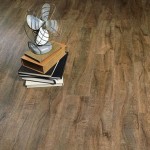Essential Aspects of Installing Vinyl Flooring Over Old Glue
Upgrading your flooring with vinyl tiles or planks can be a rewarding DIY project, even if your subfloor has a layer of old glue. By carefully preparing the surface and following the proper installation techniques, you can achieve a professional-looking and durable floor.
Assessing the Glue and Subfloor
Before installing vinyl flooring, it's crucial to assess the condition of the old glue and subfloor. If the glue is still intact and firmly bonded to the subfloor, it may not need to be removed. However, if the glue is peeling, crumbling, or wet, it must be removed completely.
To test the glue's adhesion, try to scrape it off with a putty knife. If the glue comes off easily, it will need to be removed. If it resists scraping, it may be strong enough to support the vinyl flooring.
Removing Old Glue
If the glue needs to be removed, start by scraping off as much as possible with a putty knife or scraper. Then, apply a commercial glue remover according to the manufacturer's instructions. Let the remover soak into the glue for the recommended time, then use a scraper to remove the softened glue.
For stubborn glue residue, you may need to use a heat gun or chemical stripper. However, these methods should be used with caution as they can damage the subfloor.
Preparing the Subfloor
Once the old glue is removed, the subfloor must be prepared for the vinyl flooring. Start by sanding the subfloor to smooth any rough edges or imperfections. If the subfloor is uneven, it may need to be leveled using a self-leveling compound or plywood underlayment.
The subfloor should also be clean and free of dust, dirt, and debris. Vacuum or sweep the floor thoroughly before installing the vinyl flooring.
Installing the Vinyl Flooring
Now, it's time to install the vinyl flooring. Start by measuring and cutting the planks or tiles to fit the shape of the room. Dry-fit the vinyl flooring to ensure it fits and the seams align correctly.
Apply adhesive to the subfloor according to the manufacturer's instructions, then carefully place the vinyl flooring in place. Use a roller or hand-held tamper to press down on the flooring and remove any trapped air bubbles.
Finishing Touches
Once the vinyl flooring is installed, you can add finishing touches like baseboards and moldings. These will not only enhance the appearance of the floor but also secure the edges and prevent water damage.
By following these steps carefully, you can successfully install vinyl flooring over old glue, giving your space a modern and sophisticated update.

Can I Install Vinyl Tiles Over Laminate Flooring Comprehensive Guide

How To Repair Luxury Vinyl Plank Flooring The Palette Muse

How To Install L And Stick Vinyl Plank Flooring The Nifty Nester

Laying Vinyl Planks The Right Way Expert Guide By Fantastic Handyman

Can You Lay Tile Over Linoleum Rubi Blog Usa

How To Prepare A Concrete Floor For Vinyl Flooring Parrys

How To Repair Luxury Vinyl Plank Flooring The Palette Muse

How To Install Luxury Vinyl Tile Over Linoleum Your Home Renewed

Should You Install Vinyl Floor Over Tile

Installing Luxury Vinyl Floors Over Engineered Hardwood Honey Built Home
Related Posts








